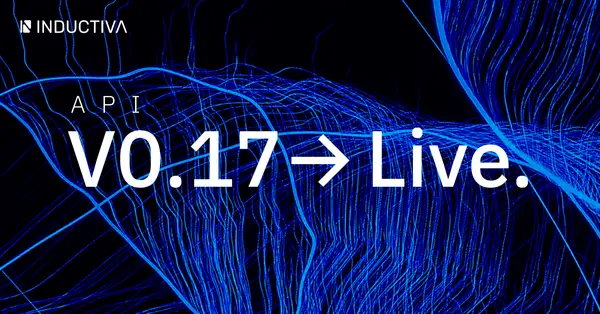At Inductiva.AI, we’re committed to pushing the boundaries of computational simulation—enabling engineers and researchers to run high-performance, efficient, and intuitive simulations across fields such as environmental modeling, coastal engineering, and seismic analysis.
With the release of Inductiva API v0.15, we’re excited to introduce powerful updates that bring even more control, flexibility, and speed to your simulation workflows. These include:
- Integration of two advanced open-source simulators for environmental and geotechnical simulations;
- A revamped Web Console for better usability and file management;
- A flexible pricing model tailored to your context;
- Optimizations in resource management and simulator execution.
These upgrades are designed with you—scientists, engineers, and technical teams—in mind, to help accelerate innovation while maintaining cost-efficiency and full visibility across your workflows.
New Open-Source Simulators Now Available
We’re expanding the Inductiva ecosystem with two robust simulators:
- COAWST – A coupled modeling system that integrates atmospheric, oceanic, wave, and sediment transport models, supporting environmental and coastal engineering research.
- OpenSees (Tcl and Py) – A widely used simulator for seismic and structural engineering analysis, providing a robust framework for earth engineering simulations.
Both simulators are now fully integrated and available via Kutu, our free repository of simulation software images. Users can access the complete list of available simulators on the website or by running:
inductiva simulators list
Web Console Usability Enhancements
Managing your simulation files and tasks is now easier and faster:
-
Enhanced storage navigation – Users can explore folders, download, and delete files and directories more intuitively, and even view the contents inside zip files, effectively managing their Inductiva bucket

- Integrated storage within task pages – The storage browser was integrated in the task’s detail page, so that the user is able to inspect its inputs and outputs without having to download them.

- Smaller task outputs – Redundant input files are no longer included in outputs, reducing file sizes and storage usage.
- Improved task filtering – Quickly sort and locate tasks by project or status.
- Refined virtual machine selection – A more responsive and intuitive interface for finding the computational resource that best fits the user’s workload.
These changes streamline your workflow, save time, and let you focus on what matters most—your research.
New Pricing Model: Built Around You
We’ve restructured our pricing plans to better match our users’ backgrounds, goals, and workflows:
- Starter – Ideal for independent users and small projects.
- Business – Designed for organizations with advanced simulation needs.
- Academia – Tailored for researchers and educational institutions.
Each plan comes with predefined quotas and resource allocations, ensuring cost predictability and scalability.
By attentively gathering usage stats and user insights we reviewed the Quotas, increasing their limits or even removing them completely, so that the user can scale their simulations while still benefitting from curated resources management.
Users can check out their assigned plan and quotas at all times.
Store Outputs (and Inputs) of Multiple Tasks Under the Same Subfolder
Based on feedback from our users, you can now store inputs and outputs from multiple tasks in the same subfolder—making it easier to export, share, or download all relevant files in one go.
Enhanced Machine Management and Performance Optimization
To further enhance efficiency, we have introduced:
- Automatic Machine Shutdown – MachineGroups now automatically shut down after 3 minutes of inactivity, preventing unnecessary resource usage.
- Smarter selection of the simulator compilation – The system now automatically selects the most suitable simulator Docker image based on the user’s computational resources:
- If a machine has GPUs, a GPU-optimized image is selected.
- If no compatible image is available, the system alerts the user before execution.
These improvements boost computational efficiency and help you optimize both performance and budget. Learn more about how Inductiva helps monitoring the computational resources here.
Looking Ahead: What’s Next for Inductiva.AI?
Our roadmap continues to prioritize performance, usability, and automation. Here’s a preview of what’s coming soon:
- Expanded usability improvements for simulations and workflow automation.
- Upgrades to storage management for even more efficient data handling.
- Email alerts for task completion notifications.
- Enhanced team collaboration tools, including shared machine group management.
We appreciate the continued support of our users and look forward to seeing how these new tools help push the simulation research and engineering.
A heartfelt thank you to the entire Inductiva team for their dedication.



